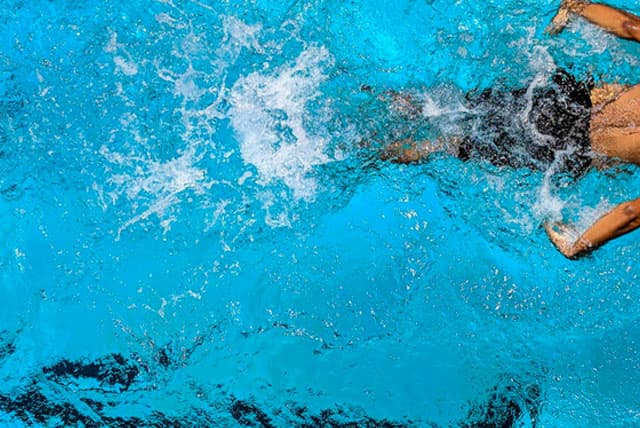Staying active is important, no matter what our stage of life. The evidence is clear, being moderately fit delivers not only physical advantages but is also associated with social and mental benefits. There’s an enormous range of research projects that confirm this – a few minutes with your favourite search engine will find many of them. (Especially useful if you need to persuade a reluctant partner or friend – activity if often best, and easier, when shared.)
For us who are older rather than younger, living an active lifestyle can provide a priceless advantage: Independence.
Quick Links:
Swimming
Tai Chi
Walking
Your Next Stepz
Independence is not only a practical thing, it’s an emotional affirmation that we are still able to do whatever we desire – without having to rely on others for permission or aid. It’s the ability to carry out the simplest of day-to-day things like getting the groceries, vacuuming or simply going to the local park and playground with the little ones without needing to depend on anyone else.
So, if an active lifestyle is so beneficial, what exercises will positively reinforce our health, while posing the lowest risk to our safety?
In this article, we’ll dive (not literally please, it’s a high risk activity at any age) into some popular low-impact exercises that are not only great for maintaining an active lifestyle, but are gentle on the body and safe to practice.
HINT: Check for Senior’s rates and discounts at swimming pools, gyms and other service providers. They are often a very cost-effective way of exercising if you are time-flexible.

Swimming
Swimming is an excellent exercise for both strengthening and conditioning the body. It has a relatively low risk of injury (although please always be sure to take care around the pool, where it can be slippery), and serves as a preventative measure against a range of conditions including; heart disease, diabetes, arthritis and more.
Swimming offers resistance training, which is important to older bodies, without the added strain of using weights, which can risk injury and falls.
If you are interested in following this up, a study in 2014 by the University of Western Sydney found that people who regularly swam were 33% less likely to suffer a fall during their day to day activities.
Swimming is an excellent exercise for both strengthening and conditioning the body. It has a relatively low risk of injury (although please always be sure to take care around the pool, where it can be slippery), and serves as a preventative measure against a range of conditions including; heart disease, diabetes, arthritis and more.
Unlike land-based sports, swimmers are required to create their own base of support and, at the same time, to produce a coordinated movement of both upper and lower extremities
Dafna Merom, a professor of physical activity and health and author of the study.
With only pool access and no special equipment required (except goggles if you prefer them, and bathers!), swimming provides a great opportunity to bring exercise into your routine with a minimum of fuss.
As facilities are often in public environments, swimming also doubles-up on benefits, providing new opportunities to meet, connect, and socialise with others.
HINT: Many swimming locations (and gyms) also offer classes with low impact activities such as acqua-robics which can deliver great health benefits, even if you would prefer not to swim, or are not a confident swimmer.

Tai Chi
An age-old Chinese martial art that embraces the mind, body and spirit, Tai Chi uses gentle, fluid motions and practices to cultivate our “qi”, conceived as the life energy that lives within us. This ancient practice is a simple, easy routine that is said to promote the wellbeing of our bodies and minds.
There are many studies that claim to confirm the benefits of practicing Tai Chi. These include helping minimising falls in seniors, to reduce the pain and symptoms in arthritis and Parkinson’s Disease.
Tai Chi also claims to not only build one’s physical awareness through movement, but to further heightens mental awareness of our whole being and body as a unit, which in turns help us maintain our mobility.
HINT: If you would like to add in additional resistance and strength training in a Tai Chi routine, accessories like balls or mock swords can be introduced to mildly increase the level of difficulty without increasing risk.

Walking
Perhaps the most original and easiest exercise, walking, whether it’s a walk to the shops, along a riverside or a walking track in a local park is accessible to anyone – anywhere, any time.
By taking a brisk walk – at a comfortable pace – our heart rates and blood flow are increased, and our circulation and stamina improved.
From a safety point of view, it is recommended that older people walk with at least one other, or in a well-populated area.
HINT: Local walking groups, available in most cities and many towns, usually organised either by local councils or community groups, are a great way to blend low-intensity exercise, staying active and being social.
Your Next Stepz
These are just a few of the more popular activities, there are many more.
No matter how old you are, it’s never too late to begin, or continue, an active lifestyle. By choosing the right activity to align with your personal preferences and goals, you can safely enjoy all the benefits exercise offers – ensuring that you get the most from your lifestyle for years to come.
For introductions to facilities and options, simply talk to us.





